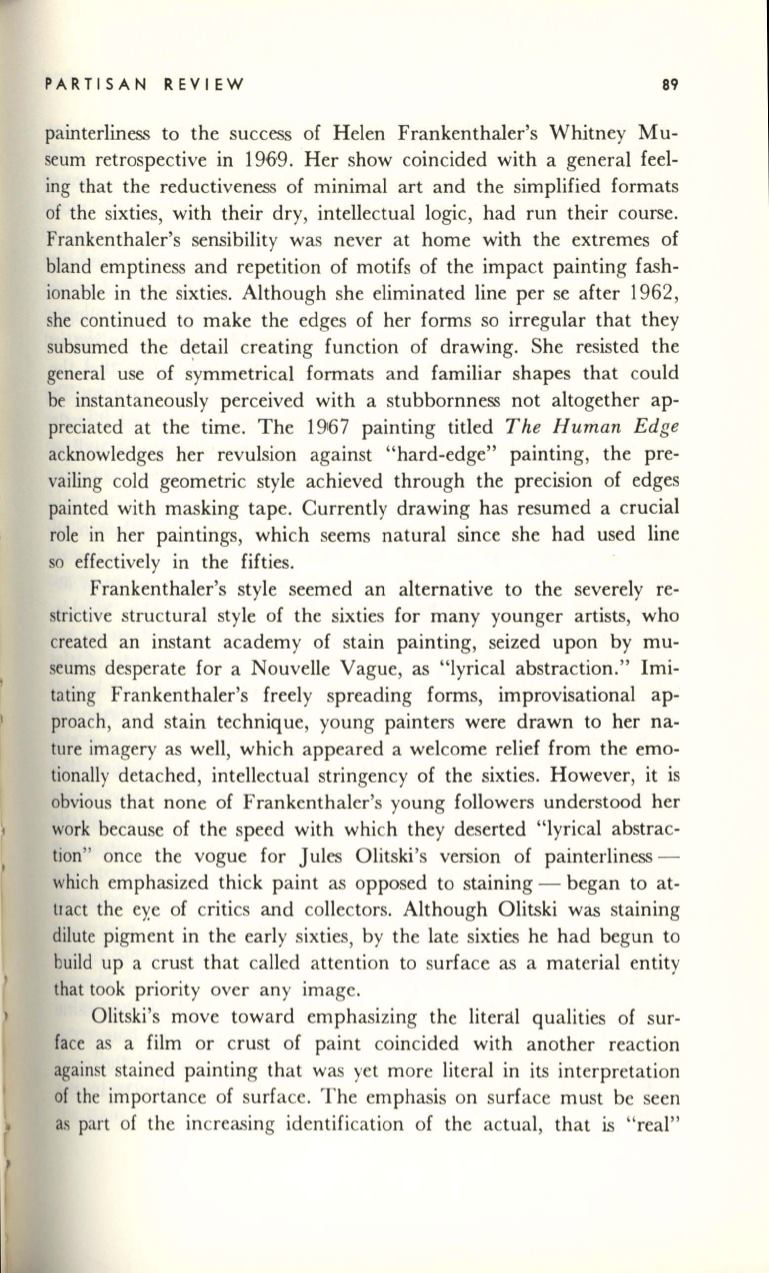
PARTISAN REVIEW
89
painterliness to the success of Helen Frankenthaler's Whitney Mu–
seum retrospective in 1969. Her show coincided with a general feel–
ing that the reductiveness of minimal art and the simplified formats
of the sixties, with their dry, intellectual logic, had run their course.
Frankenthaler's sensibility was never at home with the extremes of
bland emptiness and repetition of motifs of the impact painting fash–
ionable in the sixties. Although she eliminated line per se after 1962,
she continued to make the edges of her forms so irregular that they
subsumed the
d~tail
creating function of drawing. She resisted the
general use of symmetrical formats and familiar shapes that could
be instantaneously perceived with a stubbornness not altogether ap–
preciated at the time. The
1967
painting titled
The Human Edge
acknowledges her revulsion against "hard-edge" painting, the pre–
vailing cold geometric style achieved through the precision of edges
painted with masking tape. Currently drawing has resumed a crucial
role in her paintings, which seems natural since she had used line
so effectively in the fifties.
Frankenthaler's style seemed an alternative to the severely re–
strictive structural style of the sixties for many younger artists, who
created an instant academy of stain painting, seized upon by mu–
eums desperate for a Nouvelle Vague, as "lyrical abstraction." Imi–
tating Frankenthaler's freely spreading forms, improvisational ap–
proach, and stain technique, young painters were drawn to her na–
ture imagery as well, which appeared a welcome relief from the emo–
tionally detached, intellectual stringency of the sixties. However, it is
obvious that none of Frankenthaler's young followers understood her
work because of the speed with which they deserted " lyrical abstrac–
tion" once the vogue for Jules Olitski's version of painterliness–
which emphasized thick paint as opposed to staining - began to at–
tract the eXe of critics and collectors. Although Olitski was staining
dilute pigment in the early sixties, by the late sixties he had begun to
build up a crust that called attention to surface as a material entity
that took priority over any image.
Olitski's move toward emphasizing the literal qualities of sur–
face as a film or crust of paint coincided with another reaction
against stained painting that was yet more literal in its interpretation
of the importance of surface. The emphasis on surface must be seen
as part of the increasing identification of the actual, that is "real"


